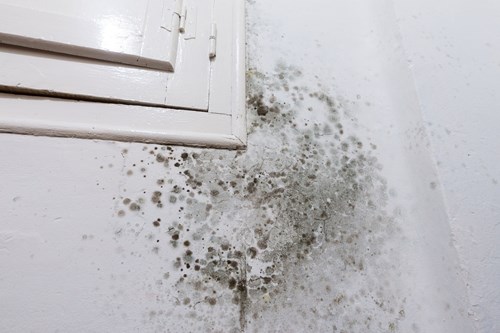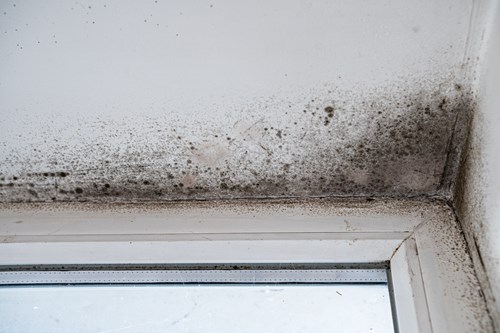As your landlord, we’re here to help you keep your home healthy and safe. This includes supporting you with preventing and treating condensation, damp and mould, which our homes are more at risk of during colder months.
Our guide includes advice on:
- How they are caused
- Preventing them
- Handling small issues
- Reporting them to us
Open the Condensation, Damp and Mould guide
If you are a Southway tenant and have a problem with these in your home you need our help with, please complete the form further down this page - we're here to help. All of the information covered in our condensation, damp, and mould guide is available as plain text below to make sure it is accessible. However, if you require it in another format or language please don't hesitate to Contact us.
During cold months, our homes are at risk of condensation, mould and damp. Understanding why this is can help us to avoid them and to handle small issues to stop them from getting worse. This is important because, if untreated, mould can cause serious health problems.
About condensation
Condensation happens when moisture in the air meets a cold surface, like our windows, tiles, and outside walls. Lots of things we do every day add moisture to the air. For example, if we measure how much water is released into the air per day for different activities the results are:
| Bathing or showering | Two pints of water |
| Drying clothes indoors | Nine pints of water |
| Cooking | Six pints of water |
| Breathing | Three pints of water |
| Leaks | If you have a leak, please contact us straight away |
About mould
A build-up of condensation can lead to mould because mould grows where there is excess moisture. Mould forms in the coldest parts of the home, like windows, corners and edges of rooms, especially on outside walls, and in cupboards and wardrobes. It can even form on clothes, shoes and bags, if they are put away when damp or tightly so that air cannot circulate.
Preventing condensation and mould
There are three main things that we can do to lower the risk of condensation and mould in our homes:
- Reduce moisture
- Help ventilation (air flow)
- Improve heating
1 Reduce moisture
Mould is caused by and grows on excess moisture so the more we do to avoid adding moisture to the air, the better. To reduce moisture you can:
| To reduce moisture | Wipe condensation from your windows and sills in the morning. |
| Whilst cooking | Cover pans, turn down heat once things are boiling and don't leave kettles boiling |
| When drying clothes | Don't dry them on radiators - an airer or clothes horse is best, dry them in one room with the door closed and the window open slightly. If too cold, choose a room with a fan, like a bathroom, and close the door. If you use a tumble dryer, run the outlet pipe through an outside wall, not a window. Condenser tumble dryers are best. |
| When running a bath | Run cold water in first to reduce steam. |
2 Help ventilation (air flow)
Condensation builds up when moisture in the air can't escape, so we need to help air to flow right through our home.
| To help ventilation (air flow) | Don't turn off the extractor fans or trickle vents in your home, leave a small gap between furniture and walls and radiators and keep windows open a little each day where possible. Opening two different windows at the same time on different sides of your home, for about 30 minutes, is even better. |
| When bathing or showering | Keep extractor fans running and windows shut or open the bathroom window(s). |
| When cooking | Use your cooker hood or fan, or open a window and close the door leading to the house. |
3 Improve heating
Heating the home in certain ways can avoid warm air meeting very cold services.
| To improve heating | Use your thermostat to help keep a steady temperature. 18 - 21 degrees is ideal. |
| If you have thermostatic radiators | Put them on a low setting in rooms you don't use often. |
| In the kitchen and bathroom | Keep the heating on a constant low as these rooms often have lots of moisture. |
So what is damp?
Condensation is a type of damp. There are other types such as rising damp and penetrating damp.
| Rising damp | Appears at a low level on the ground floor walls or on solid floors. Look out for tidemarks. |  |
| Penetrating damp | Appears around window and door frames or gutters. |  |
Please report these to us. We will work with you to find and treat the cause Look out for, and report any issues like:
- Leaks in the roof, gutter, rainwater pipes or internal pipes
- Missing roof tiles or damaged flat roof coverings
- Rotten windowsills
- Blocked guttering, or blocked or missing air bricks
- Crumbling or cracking brickwork or chimneystacks
Handling small issues yourself
Get in touch with us straight away if you have black mould or are concerned about the levels of mould at home. But if you can, handling small cases of mould yourself can be straightforward, and help stop things getting worse.
Before doing so, always put on protective gloves. Wipe the surface with a fungicidal wash, mould remover or domestic cleaning product and follow the instructions carefully. White vinegar and water can also work well. Don't use bleach, which can make things worse, or washing up liquid, which is too weak. Don't brush or vacuum mould, this can spread spores, and afterwards make sure to clean and wipe other surfaces in the room, and dry all surfaces. If the problem is too big to do this, or you can't, get in touch with us - we're here to help.
If you have a problem with condensation, mould and damp in your home you need our help with please complete our online form and one of the team will be in contact with you.
